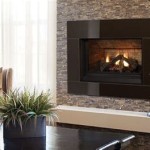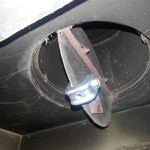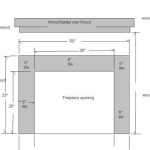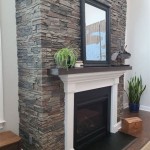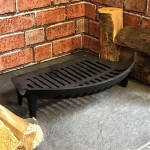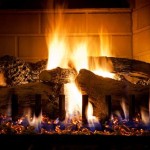Wood Inserts For Fireplaces: Efficiency, Aesthetics, and Installation
Wood inserts for fireplaces are self-contained heating appliances designed to be installed directly into an existing masonry or factory-built fireplace. They offer a more efficient and environmentally friendly alternative to traditional open fireplaces, which are notoriously inefficient, losing a significant portion of heat up the chimney. This article will delve into the key aspects of wood inserts, including their benefits, types, installation considerations, and maintenance.
Traditional open fireplaces, while aesthetically appealing, are primarily decorative and inefficient heating sources. A significant amount of warmed air escapes through the chimney, leading to substantial heat loss and increased energy consumption. Wood inserts, on the other hand, are designed to capture and radiate heat into the room, significantly improving heating efficiency. They achieve this through a closed combustion system and features such as baffles and fans that maximize heat transfer.
The utilization of a wood insert transforms a fireplace from a decorative element into a functional and efficient heating appliance. This not only reduces energy costs but also contributes to a more sustainable heating solution, particularly when using sustainably sourced wood. Furthermore, modern wood inserts often incorporate advanced combustion technologies that minimize emissions, contributing to cleaner air quality.
Benefits of Using a Wood Insert
Wood inserts offer a multitude of advantages compared to traditional fireplaces. These benefits range from improved heating efficiency and reduced fuel consumption to enhanced safety and environmental friendliness. Understanding these advantages is crucial in determining whether a wood insert is the right choice for a particular heating need.
Improved Heating Efficiency: One of the primary benefits of a wood insert is its significantly improved heating efficiency. Unlike open fireplaces that lose a large portion of heat up the chimney, wood inserts are designed to capture and radiate heat into the room. They often incorporate features such as insulated fireboxes, baffles, and blowers to maximize heat transfer and minimize heat loss. This results in a more comfortable and consistently warm living space.
Reduced Fuel Consumption: Due to their enhanced efficiency, wood inserts require less wood to produce the same amount of heat compared to open fireplaces. This translates to reduced fuel consumption, lower heating costs, and less frequent trips to replenish wood supplies. The efficient combustion process also ensures that wood is burned more completely, extracting maximum energy from each log.
Enhanced Safety: Open fireplaces can pose safety hazards due to sparks, embers, and uncontrolled combustion. Wood inserts, with their closed combustion systems, significantly reduce these risks. They prevent sparks and embers from escaping into the room, minimizing the risk of fire. Additionally, the controlled combustion process ensures that the fire burns more predictably and safely.
Environmental Friendliness: Modern wood inserts are designed to meet strict emission standards set by regulatory agencies. They incorporate advanced combustion technologies that minimize the release of pollutants into the atmosphere. By burning wood more cleanly and efficiently, wood inserts contribute to improved air quality and a reduced carbon footprint, especially when using renewable sources of wood.
Zone Heating Capability: Wood inserts allow for efficient zone heating, enabling homeowners to heat specific areas of their homes rather than heating the entire house. This can significantly reduce energy costs, particularly in homes with poorly insulated areas. By focusing heat where it is needed most, wood inserts provide a cost-effective and energy-efficient heating solution.
Types of Wood Inserts
Wood inserts are available in a variety of types, each with its own features, benefits, and installation requirements. Understanding the different types of wood inserts enables homeowners to select the option that best suits their specific needs and preferences. These types are primarily distinguished by their construction materials and heating capabilities.
Cast Iron Wood Inserts: Cast iron wood inserts are known for their durability, heat retention capabilities, and traditional aesthetic appeal. Cast iron is an excellent conductor of heat, allowing these inserts to radiate heat evenly and efficiently. Cast iron inserts often feature intricate designs and decorative elements, adding a touch of elegance to any living space. They are typically more expensive than steel inserts but offer superior heat retention and longevity.
Steel Wood Inserts: Steel wood inserts are a more affordable alternative to cast iron inserts. They are lightweight, durable, and offer excellent heating performance. Steel inserts typically heat up faster than cast iron inserts, making them a good choice for homes that require quick heat. They are also easier to install and maintain. Modern steel inserts often incorporate advanced combustion technologies to maximize efficiency and minimize emissions.
Catalytic Wood Inserts: Catalytic wood inserts utilize a catalytic combustor to burn off gases and particles that would otherwise be released into the atmosphere as pollutants. This results in cleaner burning, reduced emissions, and increased efficiency. Catalytic inserts require regular maintenance to ensure the combustor functions properly. The combustor needs to be replaced periodically. They generally offer higher heating efficiency compared to non-catalytic models.
Non-Catalytic Wood Inserts: Non-catalytic wood inserts rely on a combination of air injection and baffle systems to achieve efficient combustion. These inserts are generally easier to operate and maintain than catalytic models. While they may not be quite as efficient as catalytic inserts, they still offer a significant improvement over traditional fireplaces. Non-catalytic inserts are a popular choice for homeowners seeking a balance between efficiency, ease of use, and cost.
Installation Considerations
Proper installation is crucial for ensuring the safe and efficient operation of a wood insert. Incorrect installation can lead to safety hazards, decreased performance, and potential damage to the insert and surrounding structure. Therefore, it is essential to carefully consider all aspects of the installation process.
Professional Installation: It is strongly recommended to have a wood insert professionally installed by a qualified and certified technician. Professional installers have the expertise and experience to ensure that the insert is properly installed according to manufacturer specifications and local building codes. They can also identify and address any potential issues that may arise during the installation process.
Chimney Liner Installation: A chimney liner is a crucial component of a wood insert installation. It serves to protect the existing chimney from the corrosive byproducts of wood combustion. The liner also helps to improve the draft of the chimney, ensuring proper ventilation and preventing the buildup of creosote. The chimney liner should be sized appropriately for the specific wood insert being installed and installed in accordance with local codes.
Clearance Requirements: Wood inserts require specific clearance distances from combustible materials to prevent fire hazards. These clearances are typically outlined in the manufacturer's installation manual and must be strictly adhered to. Maintaining proper clearances ensures that the surrounding walls, floors, and other combustible materials do not overheat and ignite.
Hearth Extension: A hearth extension is a non-combustible surface that extends in front of and to the sides of the wood insert. It serves to protect the flooring from sparks, embers, and hot ashes that may escape from the insert. The size and material requirements for the hearth extension are typically specified in local building codes and the manufacturer's installation manual.
Ventilation and Airflow: Proper ventilation and airflow are essential for efficient combustion and safe operation of a wood insert. The insert should have adequate access to combustion air to ensure that the fire burns cleanly and efficiently. Additionally, the surrounding area should be well-ventilated to prevent the buildup of carbon monoxide. A carbon monoxide detector should be installed in the vicinity of the wood insert to provide an early warning of any potential carbon monoxide hazards.
Building Codes and Permits: Before installing a wood insert, it is important to check with local building codes and obtain any necessary permits. Building codes often specify requirements for chimney liners, clearances, hearth extensions, and other aspects of the installation. Obtaining the appropriate permits ensures that the installation is compliant with local regulations and helps to protect the safety of the homeowner and the community.
By carefully considering these installation considerations, homeowners can ensure that their wood insert is installed safely, efficiently, and in compliance with all applicable regulations. A properly installed wood insert will provide years of reliable and efficient heating, enhancing the comfort and value of the home.

Wood Burning Fireplace Inserts Insert Installation

Napoleon Epi3 Wood Fireplace Insert Inserts By

Wood Inserts We Love Fire

Why A Wood Burning Fireplace Insert Bethesda Md Service

Lopi Premium Wood Fireplace Inserts Custom Hearth Fireplaces And Stoves

Wood Inserts Fireplace Xtrordinair Made In America

T25i Timberwolf Wood Fireplace Insert Hearth Stove Patio

Large Flush Wood Rectangular Nexgen Fyre Made In America Fireplace Xtrordinair

Rais 60 Insert Wood Fireplace For

Ventis Hei240 Wood Burning Insert
Related Posts

